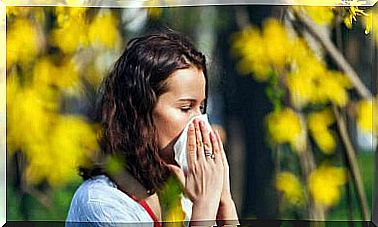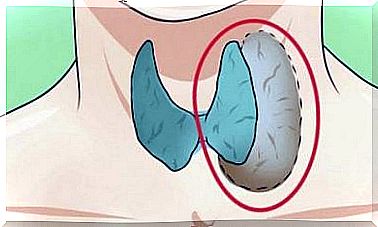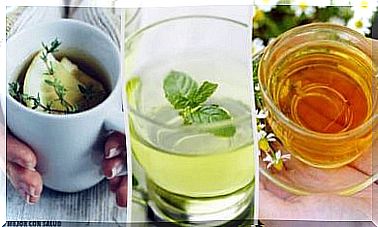What Is Ecchymosis?
Ecchymosis is a small area of skin or mucous membrane bleeding that looks similar to a hematoma. This spot-like bleeding is particularly important in forensic medicine and forensics. Find out today what ecchymosis is and what reasons can lead to it.
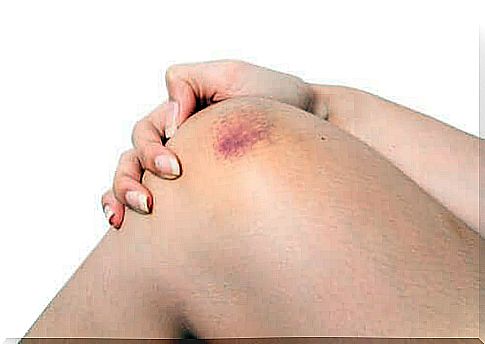
A ecchymosis is a small-scale circulation of the skin or mucous membrane, which occurs very frequently. Very often this spot-like bleeding indicates other pathologies.
The bleeding caused by the bursting of a blood vessel under the skin can be seen on the surface of the skin like hematomas. But there is no skin damage. The leakage of blood from the blood vessel is called extravasation by specialists. In ecchymosis , subcutaneous extravasation occurs without damaging the skin.
There are many reasons for this: The small-scale bleeding can be triggered by trauma (blow, impact), an infection that attacks the blood vessels from the inside, or a muscle tear.
Ecchymosis is known as a skin injury, but it’s not just about the outermost layers of the skin. This injury can also develop in the mucous membrane, for example in the oral cavity.
Possible causes of ecchymosis
There are several factors that can lead to ecchymosis. The result is the injury to a blood vessel and subcutaneous extravasation, which can be caused by:
- Trauma: A blow or impact without direct skin injury, that is, a subcutaneous injury that is not caused by a sharp or cutting object.
- Sports activities: Athletes often suffer from ecchymosis. This can result from trauma or from overexertion during training if the muscles are injured as a result.
- Vitamin K deficiency: Vitamin K is essential for proper blood clotting. If there is a lack of vitamin K, the risk of ecchymosis is greater.
- Infections: Various infection processes can weaken blood vessels and make them more vulnerable. As a result, they burst more often without causing any direct skin damage. The small-scale bleeding can occur before the affected person has a fever.
- Coagulation disorders: As with a vitamin K deficiency, clotting disorders can increase the risk of ecchymosis. One example of this is Von Willebrand’s disease. It should be noted that the blood clotting disorder can also be caused by other diseases, such as cancer.
- Taking an anticoagulant: Certain diseases require you to take an anticoagulant drug. However, this can lead to spontaneous ecchymoses. Even in the case of trauma, which would normally have no further consequences, the risk of a blood vessel rupturing is greater.
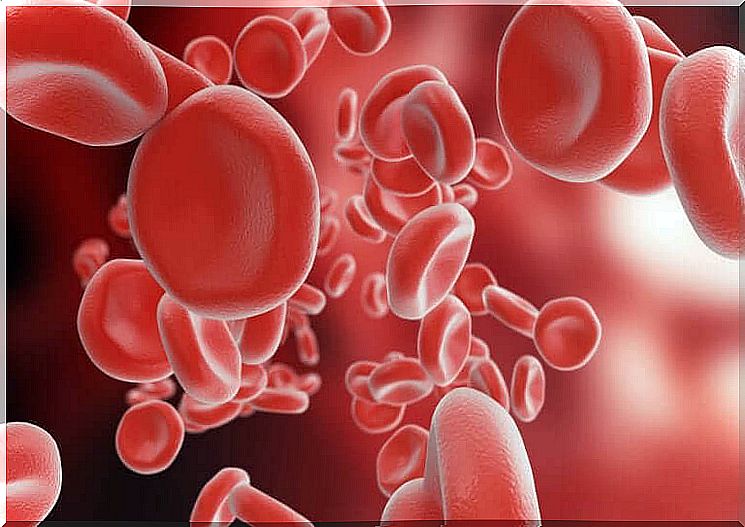
How does ecchymosis develop?
As already mentioned, ecchymosis is small-area, patch-like bleeding under the skin that does not lead to any direct skin damage. This process stops by itself and after a certain time the blood that has leaked out is reabsorbed by the organism.
However, the process can take a few weeks. During this time, the affected area of skin is colored red and changes. The different shades of color provide information about the exact stage in which the ecchymosis is.
Inside the blood vessels, the blood is red. But when it comes to extravasation and the blood is in the subcutaneous space, it is attacked by defense cells called macrophages. As a result, the plasmatic hemoglobin loses the oxygen that it carries and the color becomes darker.
The dark red color of the deoxygenated hemoglobin looks purple on the outside of the skin . This is the typical color by which ecchymosis or a hematoma can be recognized.
As the days go by, the hemoglobin is broken down. The color then slowly transforms and appears green. This is because the hemoglobin is turned into biliverdin.
After a few days, the biliverdin is then converted into bilirubin. This can be recognized by the fact that the affected greenish area of skin now takes on a yellowish color. The bilirubin then turns into hemosiderin. This can be recognized from the outside by its light brown color.
The final step in healing the bleeding is through the absorption of the blood. Here, too, the macrophages are very important because they digest the remaining hemosiderin. After this process, the skin returns to its original color.
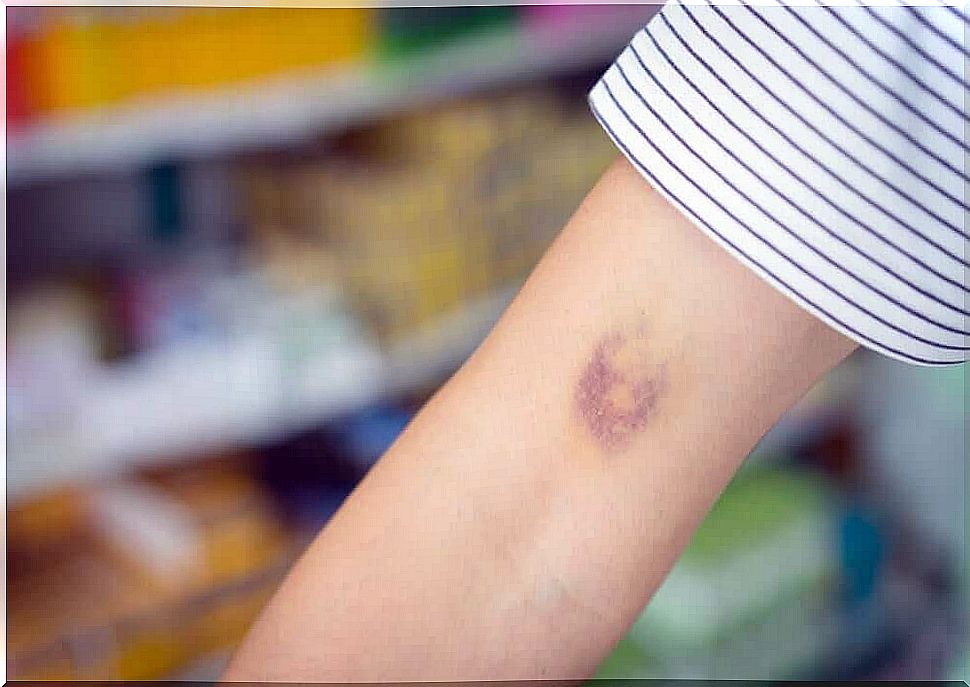
What types of ecchymosis are there?
We often use the terms ecchymosis, hematoma, bruise or petechia interchangeably. But there are differences that one should be aware of. In dermatology, the various properties are described in detail.
A hematoma or a bruise is a large-scale, massive bleeding in the tissue that is accompanied by swelling. So if there is no bump visible on the affected area, one cannot speak of a hematoma. Petechia is particularly small, punctiform hemorrhages up to the size of the head of a pin or up to 2 mm. Ecchymosis refers to extensive bleeding that can be up to 30 mm in size.
Usually, ecchymosis is temporary and usually results from trauma. However, if you notice bruises whose origin you cannot explain or identify, you must definitely see a doctor who can make an appropriate diagnosis.


